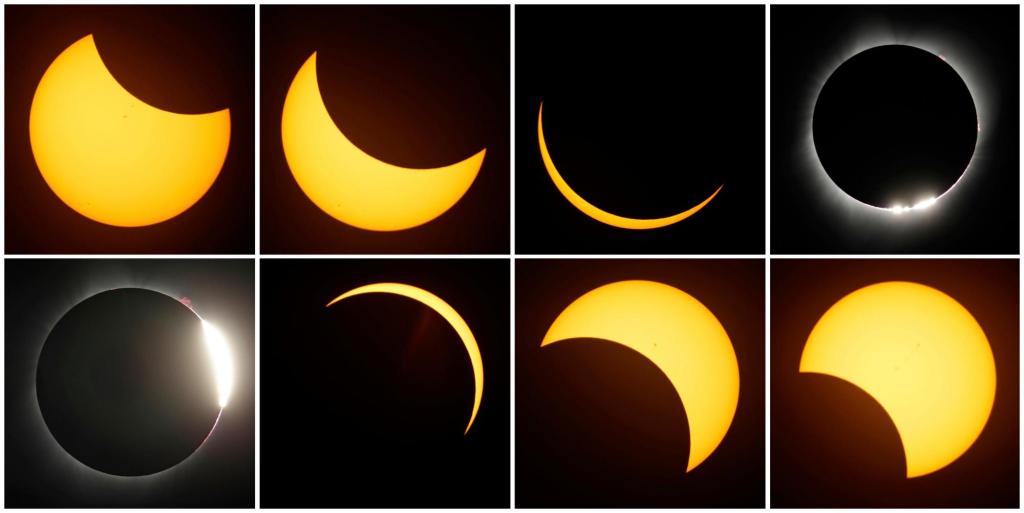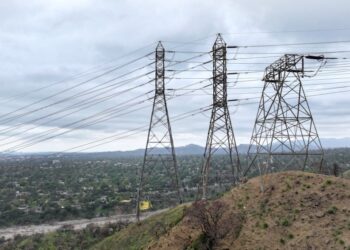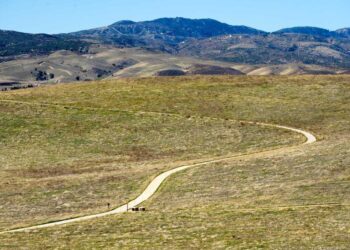On Monday, April 8, at 11:07 a.m. Pacific Daylight Time, the Earth’s familiar sun will briefly disappear for people in North America as a total solar eclipse enters the continent through Mexico’s Pacific coast.
From there, the “path of totality,” the band where the Sun is completely blocked from view, will cut diagonally across the continent, delighting U.S. viewers from Texas to Maine. All told, the totality will pass over 13 U.S. states, and at least a partial eclipse will be visible from all 50, within eyeshot of 99% of the U.S. population.
That includes us, here in Southern California, where we’ll see a nearly 50% eclipse. Joel Zinn, assistant professor at Cal State Long Beach’s Department of Physics and Astronomy, was gearing up for a public viewing event at the campus’s quad on Monday.
While he studies stuff like asteroseismology and galactic archaeology, you could hear the philosopher in him as the eclipse approaches.
“As people who live in Southern California, we may take the sun for granted,” he said. “It’s just something that’s there in the sky, and we don’t have a chance to look in detail on what’s going on with the sun.
“This is the one time when people think about it in a different way,” he said. “We’re really lucky this can even happen in the first place.”
And then there’s how one event will be a moment to join millions across a continent. He sees the moment as an exciting opportunity to engage folks who know little about the sun.
The possibility of seeing solar prominences, sun spots, the loss of light in the middle of the day – it’s all got Zinn and his stargazing kin giddy.
It is estimated that 31.6 million people in the U.S. live in the totality’s path, and many others will travel for the chance to see day become night for four and a half minutes.
And with that, here is a guide to help as you prepare for a day not quite like any other in the skies above.
What is a solar eclipse, and when…
Read the full article here







